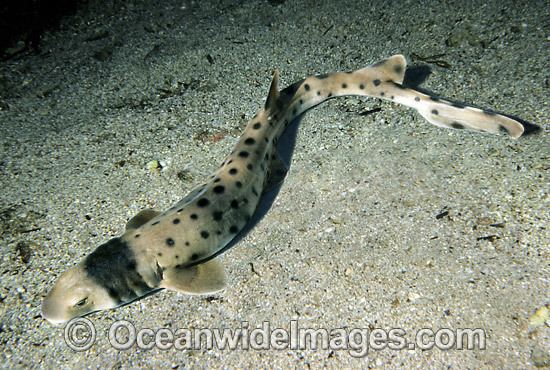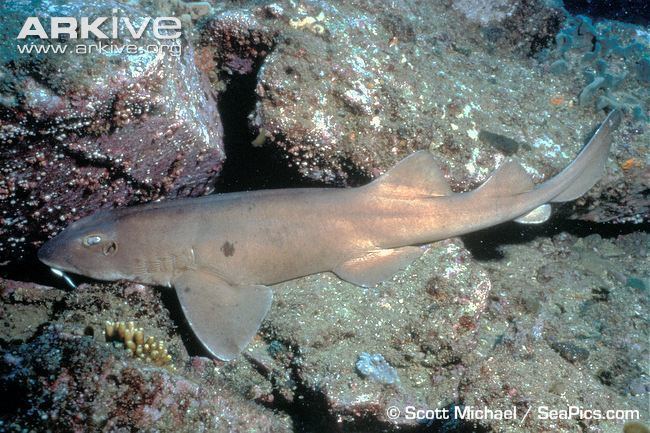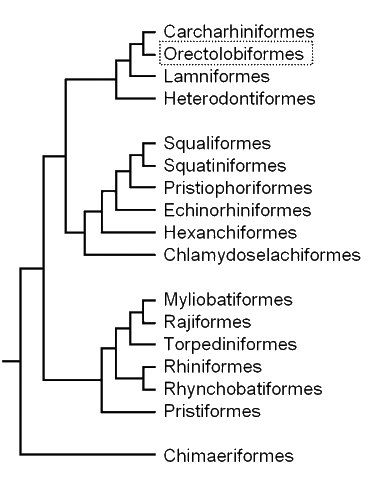Scientific name Orectolobiformes Higher classification Shark Rank Order | ||
 | ||
Lower classifications | ||
Longtail carpet sharks shark academy
Carpet sharks are sharks classified in the order Orectolobiformes. Sometimes the common name "Dog shark" (named so because many species resemble ornately patterned carpets) is used interchangeably with "wobbegong", which is the common name of sharks in the family Orectolobidae. Carpet sharks have five gill slits, two spineless dorsal fins, and a small mouth that does not extend past the eyes. Many species have barbels.
Contents
- Longtail carpet sharks shark academy
- Carpet shark ambush
- Characteristics
- Behaviour
- Distribution
- Classification
- References

Carpet shark ambush
Characteristics

The carpet sharks are a diverse group of sharks with differing sizes, appearances, diets, and habits. They first appeared in the fossil record in the Early Jurassic; the oldest known orectolobiform genera are Folipistrix (known from Toarcian to Aalenian of Belgium and Germany), Palaeobrachaelurus (Aalenian to Barremian) and Annea (Toarcian to Bajocian of Europe). All species have two dorsal fins and a relatively short, transverse mouth that does not extend behind the eyes. Besides the nostrils are barbels, tactile sensory organs, and grooves known as nasoral grooves connect the nostrils to the mouth. Five short gill slits are just in front of the origin of the pectoral fin and the fifth slit tends to overlap the fourth one. A spiracle occurs beneath each eye which is used in respiration. The only exception to this rule is the whale shark, the spiracles of which are situated just behind the eyes. Carpet sharks derive their common name from the fact that many species have a mottled appearance with intricate patterns reminiscent of carpet designs. The patterning provides camouflage when the fish is lying on the seabed. The largest carpet shark is the whale shark (Rhincodon typus) which can grow to a length of 14 m (46 ft). It is the largest species of fish, but despite its size, is not dangerous, as it is a filter feeder, drawing in water through its wide mouth and sifting out the plankton. The smallest carpet shark, at up to about 30 cm (12 in) long, is the barbelthroat carpet shark, (Cirrhoscyllium expolitum). Some of the most spectacularly coloured members of the order are the necklace carpet shark (Parascyllium variolatum), the zebra shark (Stegostoma fasciatum), and the ornate wobbegong (Orectolobus ornatus). Nurse sharks and whale sharks have a fringe of barbels on their snouts, and barbelthroat carpet sharks (Cirrhoscyllium expolitum) have barbels dangling from their throat regions.
Behaviour

Most carpet sharks feed on the seabed in shallow to medium-depth waters, detecting and picking up molluscs and crustaceans and other small creatures. The wobbegongs tend to be ambush predators, lying hidden on the seabed until prey approaches. One has been observed swallowing a bamboo shark whole.

The methods of reproduction of carpet sharks varies. Some species are oviparous and lay eggs which may be liberated directly into the water or may be enclosed in horny egg cases. Some female sharks have been observed to push egg cases into crevices and this would be an added protection for the developing embryos. Other species are ovoviviparous and the fertilised eggs are retained in the mother's oviduct. There, the developing embryos, which are usually few in number, feed on their yolk sacs at first and later hatch out and feed on nutrients secreted by the walls of the oviduct. The young are born in an advanced state, ready to live independent lives.
Distribution
Carpet sharks are found in all the oceans of the world but predominantly in tropical and temperate waters. They are most common in the western Indo-Pacific region and are usually found in relatively deep water.
Classification
The order is small, with seven families in 13 genera and with a total of around 43 species:
Order Orectolobiformes
